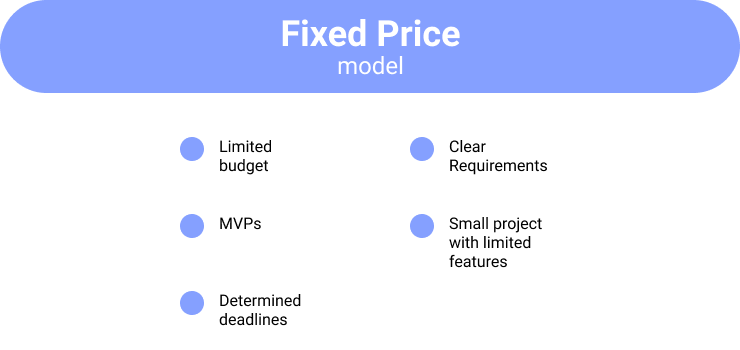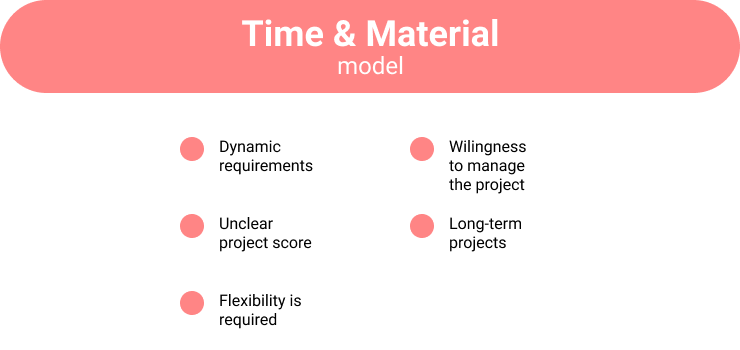Time and Material vs Fixed Price
When it comes to choosing a right engagement model for outsourced software development it is important to understand all the benefits of each model in particular. The two most popular pricing models for offshore development is Fixed price and Time & Material.
Not, so long ago, we have posted an article about how to choose an engagement model for your specific business. Today we want to break down the difference between the two most popular models and help you to define which model will be a perfect fit for your outsourced project. We belive that our key considerations will help you in choosing the right engagement model for your outsourced development project.
Fixed price software development
Fixed price model is often used when all the goals of the outsourced software development project are predefined and the budgets and the deadline for the final expected result are fixed. At first it may sound applying to you, because you know exactly when you will get your product and how much did it cost for you. Fixed rates can allow your business to pay the pre-agreed price for the final outsourced development product.
However, there are a lot of potential risks in this development pricing model, like getting low quality product because of the strict deadlines for example. Most of the outsourcing web and software developers are adding this risks to the estimations of the projects and it’s not clear whether they will be justified or not.
When you should use fixed price model
In the sphere of the offshore development, fixed price is a good fit when it comes to a short-term projects with predefined scope of work, deadlines and budgets.

Time & material software development
This engagement model does not mean that you are just paying of for the time of the developers that you hire. Time and material pricing infers that you are paying only for the scope of work that was done in a specific amount of time. When outsourced software development company is working on a time and material pricing model basis, it is more interested in getting high quality results in a shorter amount of time, because it will grant a reliable partnership for the both sides. The only problem of this model is a frequent need in communication. But, the frequent communication can help you to justify some details of your software development project that was missing at the beginning and help you make a better quality product or service.
When you should use time & material model
For the offshore development, time and material engagement model is often used when it comes to a long-term projects with a lot of flexibility and the unset scope of work .

To sum everything up
Fixed price model for web or software development is a good choice when you have a short-term project and all the details are argued and predefined. For the most of the long-term offshore development projects and especially startups we recommend using a time and material based model. We believe that these arguments will allow you to get a clear understanding what model can be applied for your specific needs. As a company with 10+ years of offshore web and software development experience, we have worked and continue our working with different engagement models for our clients from all over the globe. We strive to create the most transparent environment to help our customers solve business tasks with both quality and delivery dates guaranteed. For us, transparency means permanent and direct communication between a customer and a team of developers leading to a clear distribution of responsibilities and a better understanding of the work progress.
OS-System. We build your ideas.

Subscribe to us










